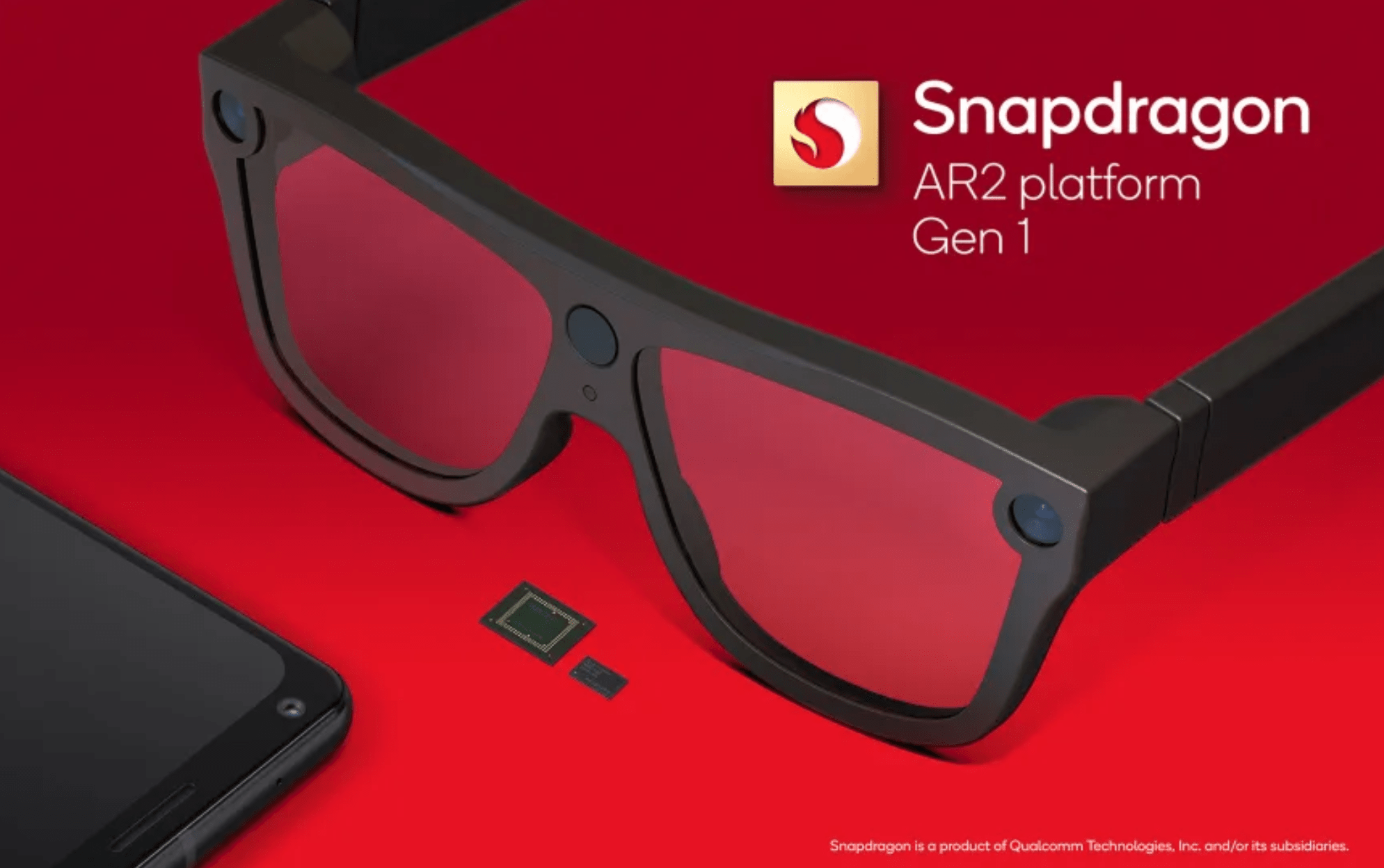Niantic Labs also revealed its Outdoor AR Headset powered by the AR2 platform.
During the Snapdragon Summit, the company unveiled its latest piece of technology, the AR2 Gen 1 platform, which will be a key component for the next generation of slimmer and more fashion-friendly augmented reality (AR) glasses.
Hugo Swart, a product marketing manager at Qualcomm, talked about this latest advancement, saying that the AR2 Gen 1 platform is the first-of-its-kind specifically designed for the development of better AR glasses. He noted that creating these types of devices is very different from other VR projects, such as something for the Quest Pro or Pico 4.
One of the biggest challenges that designers face is power consumption. Qualcomm’s multi-chip design can deliver a 2.5x increase in artificial intelligence (AI) performance while using only half the power. This could allow designers to create glasses that can detect objects in the room faster while remaining lightweight.
For Qualcomm, the goal of the AR2 Gen 1 platform is to spread the computational load across the frames by splitting the processor into three co-processors: one in each arm of the glasses and a third located above the bridge. It features a 4nm-based AR processor that’s capable of handling multiple features, such as visual analytics and graphics, and it can also support up to nine cameras that would be used for tracking you and your environment.
For reference, the Quest Pro features 10 cameras; five inside and five outside. This isn’t counting the cameras on the new Touch Pro controllers.
Unfortunately, the company noted that the new AR2 Gen 1 platform won’t be able to provide the same level of performance as the current generation of VR headsets. For instance, while the new chips will allow users to experience more accurate depth sensing and scanning, they won’t be able to provide the same level of detail.
In order to make the next generation of AR glasses a success, Qualcomm is relying on the support of computers, smartphones, and the cloud. Some of the chipsets that will be used in these next-generation glasses will be able to process AR graphics using Wi-Fi 7. This means you could theoretically connect devices to a network at speeds of up to 5.8Gbps. According to Qualcomm, this feature will help reduce latency and provide a more responsive and natural-feeling AR experience.
Thanks to the AR2 Gen 1, eye tracking will now have supported security features such as iris authentication, which could open up new ways for people to unlock their devices and introduce other features to improve your AR experience.
Prior to working on the next generation of AR glasses, the company had already worked on various AR headsets, such as the NReal Light and the A3 glasses from Lenovo. However, during a briefing with reporters, Swart noted that the company’s current efforts haven’t been able to provide the same level of performance when it comes to battery life, with battery life on all AR and VR headsets averaging right under 2 hours.
Getting involved in the ecosystem is very important for tech companies as it allows them to expand their reach and provide their products with the best possible support. For instance, earlier this year Microsoft announced a partnership to utilize the AR2 Gen 1 chip for future products beyond the HoloLens 2.
By the way, it should be noted that Niantic Labs has also announced its own slick-looking Outdoor AR Headset powered by Qualcomm’s AR2 platform. The device weighs only 0.5lbs and boasts some pretty awesome specs according to the company:
- Snapdragon AR2 Gen 1
- Works outside.
- Hand-tracking
- Works with Snapdragon Spaces (Unity/Unreal)
- 2.5X better AI, 50% less power (vs last-gen)
- WiFi 7
- Latency phone to device 2ms
- 3rd party controllers
- Supports Lightship/VPS
In addition, Qualcomm also introduced new S3 Gen 2 and S5 Gen 3 sound platforms that are designed to make the latest technology more accessible. This includes spatial audio, which allows users to track their head movements, and the latest version of adaptive noise cancellation, which can be used in games. Unfortunately, these won’t be available until the second half of 2023.
Despite the various features that will be included in the company’s next generation of AR glasses, it’s still not yet clear if the technology will be able to provide the same level of performance. However, given the progress that the company has made, it’s possible that the next generation of AR glasses could be the start of a new era of innovation.
Hey, I just want to look cool and have fun AR experiences!
You can learn more about Qualcomm’s Snapdragon A2 Gen 1 platform by clicking here.
Feature Image Credit: Qualcomm
The post Qualcomm Reveals AR2 Gen 1 Platform For AR Glasses appeared first on VRScout.






